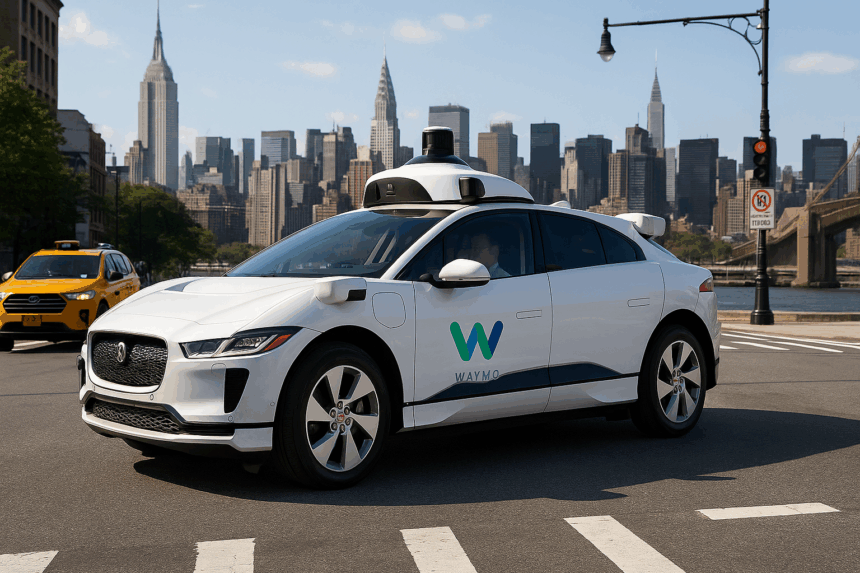Waymo has begun testing its self-driving robotaxis in New York City, marking the first time fully autonomous vehicles will operate under trial in Manhattan and Brooklyn. The test comes after approvals from the New York City Department of Transportation (DOT) and extends through September 2025.
What’s Happening & Why This Matters
Waymo, owned by Alphabet, is deploying up to eight autonomous vehicles across select parts of Manhattan and downtown Brooklyn. The pilot is limited, and under New York’s strict AV rules, each vehicle must have a trained autonomous vehicle (AV) specialist in the driver’s seat during operation.
The program builds on Waymo’s earlier rollouts in Austin and the Bay Area, and follows expansion tests in Philadelphia. By 2026, Waymo plans to reach Dallas, Washington DC, and Miami, reflecting its nationwide growth ambitions. The company says it has already completed 10 million rides in five U.S. cities.
Safety Concerns and Opposition
The arrival of robotaxis in New York has drawn criticism. Former Mayor Bill de Blasio called the decision “a really bad idea,” stressing that New York’s dense mix of pedestrians, cyclists, and vehicles makes it unsuitable for autonomous driving.
The Transport Workers Union, represented by Curtis Tate, echoed these concerns. Tate warned that robotaxis could threaten “hundreds of thousands of jobs” in transportation while enriching “big tech bros.”
In contrast, DOT Commissioner Ydanis Rodriguez defended the trial, stating that strong oversight “will help ensure that the development of this technology is focused, first and foremost, on the safety of everyone who shares our busy city streets.”
Federal Oversight and NYC Influence

Safety regulators have also been watching closely. The National Highway Traffic Safety Administration (NHTSA) recently closed a 14-month investigation into 22 Waymo incidents, including 17 collisions. While the probe ended without penalties, it underscored the risks of deploying autonomous fleets in busy urban environments.
Securing approval in New York, America’s largest and most complex urban environment, represents more than just another rollout. It’s a stress test for autonomous technology in one of the most unpredictable traffic systems in the world. A successful trial could boost Waymo’s credibility and accelerate acceptance of self-driving cars in other major cities.
TF Summary: What’s Next
Waymo’s entry into New York places the spotlight on both the promise and the risks of autonomous vehicles in dense cities. Supporters point to innovation and expanded mobility options, while critics stress safety concerns and potential job losses. The next few months will determine if the technology can handle the complexity of New York traffic while maintaining public trust.
The pilot’s outcome may influence regulatory decisions across the country, changing how fast self-driving cars gain ground in the U.S. transportation market.
— Text-to-Speech (TTS) provided by gspeech


